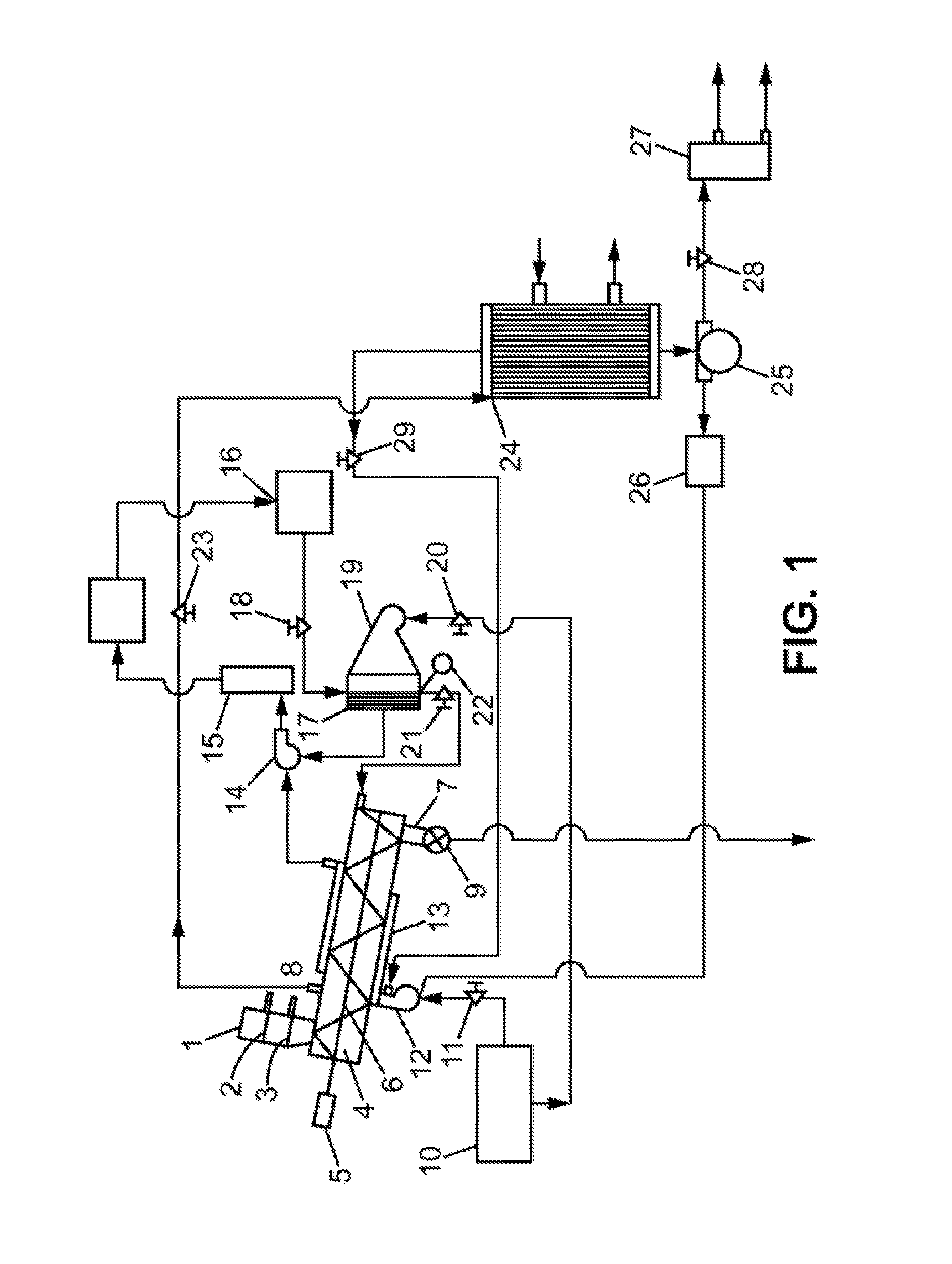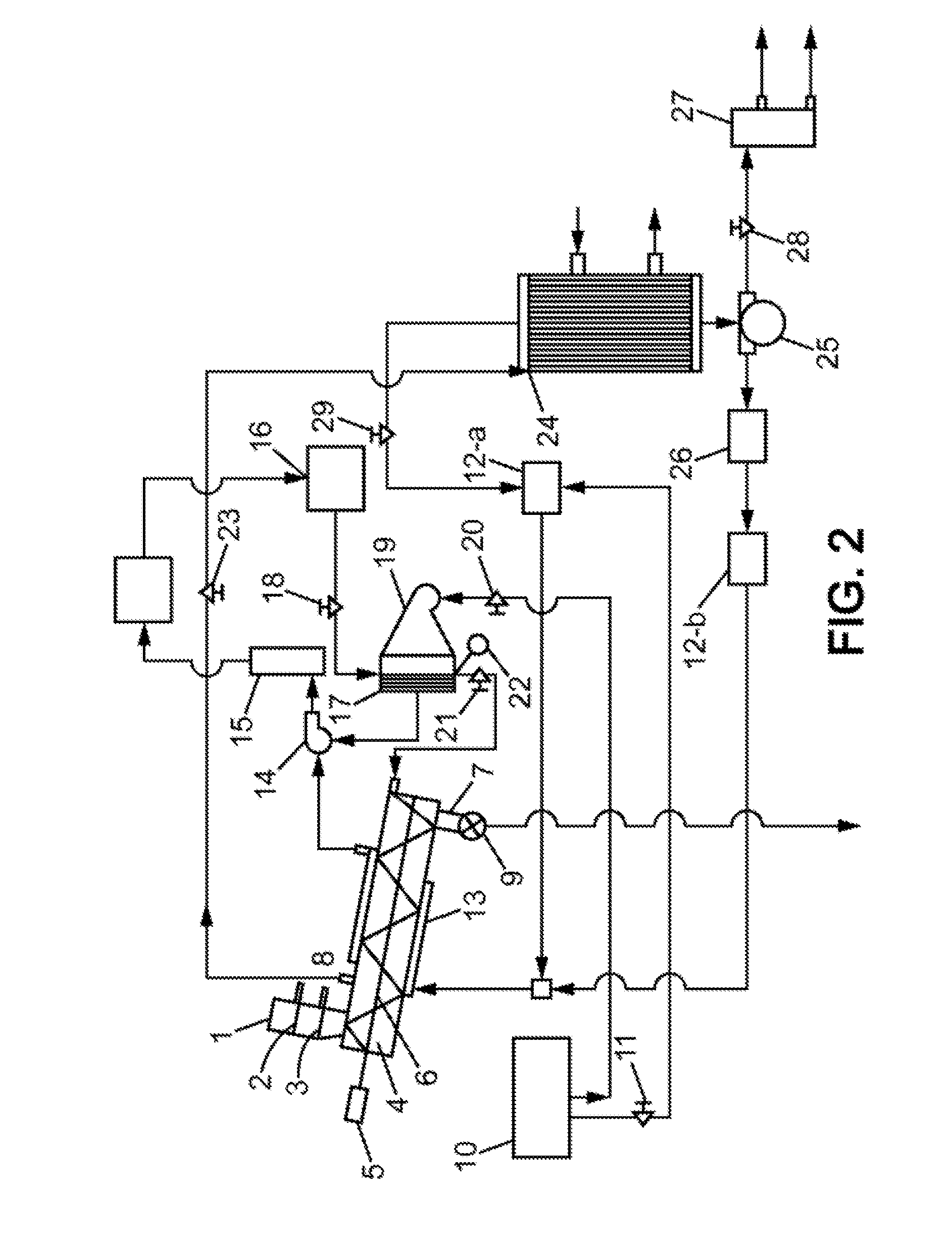Method for treating carbonaceous materials by vapor thermolysis
a technology of carbonaceous materials and vapor thermolysis, which is applied in the direction of liquid hydrocarbon mixture production, inorganic chemistry, special form destructive distillation, etc., can solve the problems of large amount of burned materials, low quality of carbon black obtained by this method, and high energy consumption to produce 1 kg of soot, etc., to reduce harmful emissions, reduce the amount of energy consumed, and reduce the effect of pollution harmful to health and environmen
- Summary
- Abstract
- Description
- Claims
- Application Information
AI Technical Summary
Benefits of technology
Problems solved by technology
Method used
Image
Examples
Embodiment Construction
[0035]In a conventional method for steam thermolysis of carbonaceous materials such as waste rubber, wastewater is formed, also called condensate, essentially corresponding to the condensed steam and separated from the liquid hydrocarbon fraction which contains the hydrocarbon mixture. Analysis of this condensate shows that it contains, among other things:[0036]caprolactam (concentration: 1.16 g / l), C6H11NO: main substance from the thermal decomposition, lactam from e-epsilon aminocaproic acid or cyclic amide from e-epsilon aminocaproic acid, in the form of white crystals. This compound has high polymerization capacity when heated (250-260° C.) in the presence of a small amount of water, alcohol, amines, organic acids, and other combinations to form a useful polymer, poly-e-caproamide (polyamide resin) and raw materials for the formation of capron.[0037]benzoic acid (concentration: 0.21 g / l), C6H5COOH: elementary aromatic acid in the form of colorless bright crystals.[0038]cyclopent...
PUM
| Property | Measurement | Unit |
|---|---|---|
| Temperature | aaaaa | aaaaa |
| Temperature | aaaaa | aaaaa |
| Temperature | aaaaa | aaaaa |
Abstract
Description
Claims
Application Information
 Login to View More
Login to View More - R&D
- Intellectual Property
- Life Sciences
- Materials
- Tech Scout
- Unparalleled Data Quality
- Higher Quality Content
- 60% Fewer Hallucinations
Browse by: Latest US Patents, China's latest patents, Technical Efficacy Thesaurus, Application Domain, Technology Topic, Popular Technical Reports.
© 2025 PatSnap. All rights reserved.Legal|Privacy policy|Modern Slavery Act Transparency Statement|Sitemap|About US| Contact US: help@patsnap.com


